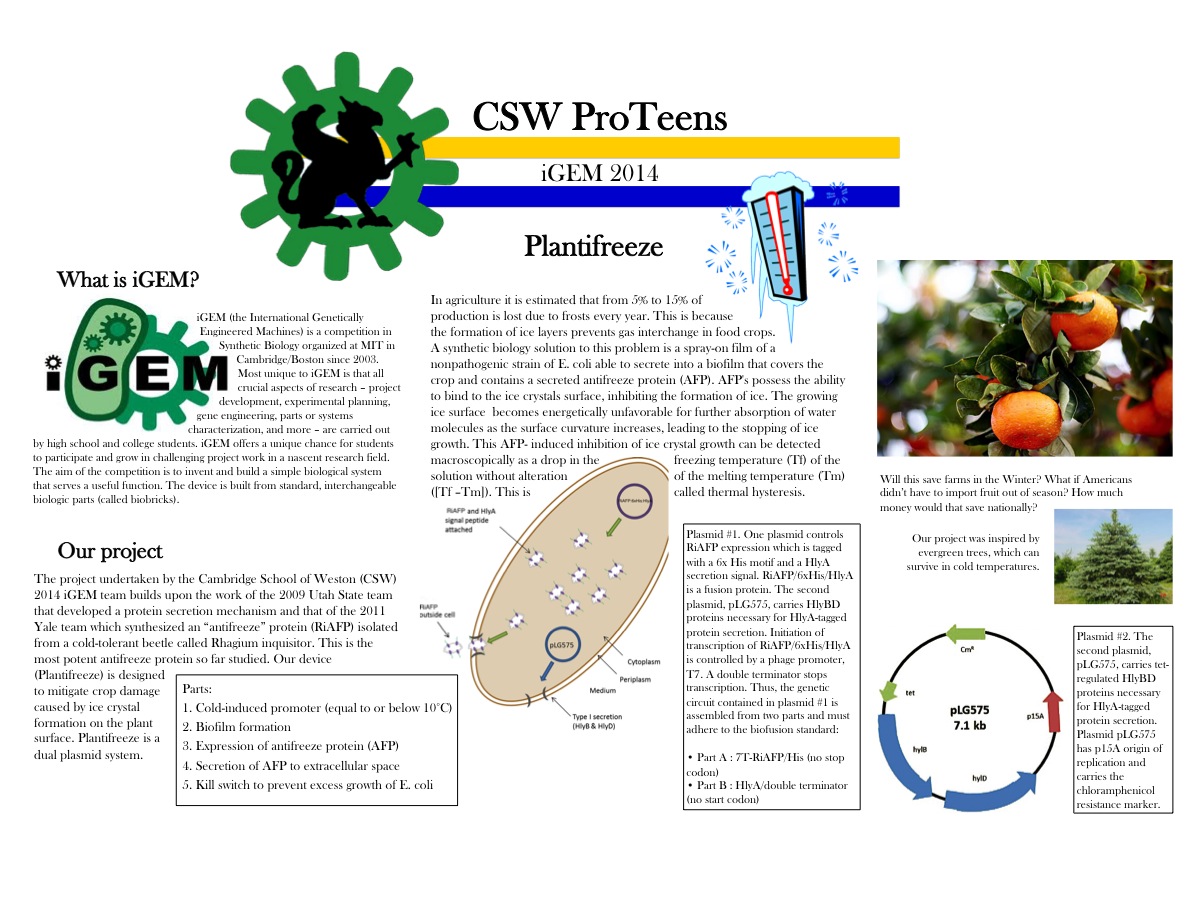Team:CSWProteens/humanpractices
From 2014hs.igem.org
| Line 202: | Line 202: | ||
<li><p class="auto-style1">Emphasize that a variety of government and private organizations study and monitor the potential risks of synthetic biology</li> | <li><p class="auto-style1">Emphasize that a variety of government and private organizations study and monitor the potential risks of synthetic biology</li> | ||
</ul> | </ul> | ||
| - | <p><a href="https://static.igem.org/mediawiki/2014hs/c/c1/Illuminarium_Poster_1.jpg"><img src="https://static.igem.org/mediawiki/2014hs/c/c1/Illuminarium_Poster_1.jpg" width=" | + | <p><center><a href="https://static.igem.org/mediawiki/2014hs/c/c1/Illuminarium_Poster_1.jpg"><img src="https://static.igem.org/mediawiki/2014hs/c/c1/Illuminarium_Poster_1.jpg" width="600"></a><p><i>Our poster. Click to enlarge.</i></center> |
Revision as of 15:28, 20 June 2014



H U M A N P R A C T I C E S
Although it has its roots in the long established discipline of molecular biology, the field of synthetic biology is still in its infancy. Consequently, the overwhelming majority of the public has no awareness of this emerging field. An informal pool of the student body at our own school in the Western suburbs of Boston (ground zero for synthetic biology) confirmed this notion. Consequently, the goal of our Human Practices effort was to enlighten the student body of our secondary school about synthetic biology and to promote interest in synthetic biology and iGEM to younger generations of students.
For the human practices component of our project, we shared our enthusiasm for synthetic biology with our school community. There is an annual festival of light and art at our school called Illuminarium, to celebrate the springtime. At the event, students present their various artworks, such as film, photography or sculptures. We thought that we could show E. coli that had been transformed with pPRL (a purple pigment-producing plasmid) and pGRN (a green pigment-producing. We are grateful to BioBuilder for the kit that allowed us to do the transformations. We explained the process of transformations and the goals of synthetic biology. We also informed the community of our project through posters and conversation. Many students had never heard of iGEM or synthetic biology, and their enthusiasm after speaking with us was apparent. Although Illuminarium is typically a festival for the arts, students and faculty were interested and receptive of our presentation, demonstrating the interdisciplinary nature of the event and community.

The team at the Illuminarium table.
To better prepare us for the effort, described below, we surveyed the literature and developed a briefing document for distribution among the iGEM team at CSW.
The major points made in the briefing document are summarized in bullet points herein:
Providing individuals with a fundamental knowledge of synthetic biology allows each person to form fact-based opinions, hopefully forestalling the development of misconceptions
The level of support for synthetic biology research will receive depends on public opinion.
Government regulations and public policy are driven by the beliefs and viewpoints of the public. If the public are not educated on the benefits and risks of synthetic biology they cannot make informed decisions regarding its support.
Research in this field has enormous potential for the advancement of technology, including medicine, pharmaceuticals, food and agriculture, the environment, and alternative energy.
The potential benefits of the technology must not be overhyped for this risks both creating excessive public anxiety and unrealistic hopes.
It is perfected reasonable and expected for the public to have concern about unforeseen, unintended consequences that might occur from synthetic biology
Emphasize that a variety of government and private organizations study and monitor the potential risks of synthetic biology

Our poster. Click to enlarge.
 "
"